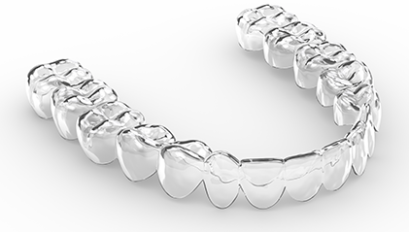

“I attended the surgery and was seen on time. My dentist, Dhrumil Patel, welcomed me and immediately puts you at...” ease. After my check up, I asked a number of questions, which he answered and explained in such a way, that you can't fail to understand. He also shows images, so its a visual thing as well. He takes his time, which makes you feel its not a production line. All in all, a very pleasant dental experience.”

“Incredible experience start to finish! Dr Jatan was amazing, not pushy at all and was extremely knowledgeable and kind. Invisalign...” treatment went perfectly, whitening too. Can't recommend enough.”

“Excellent! I would never have dreamed of giving a dentist such a comment! But it is true! Highly recommended.”

“Had my hygienist appointment with Mayurahea and was super informative throughout, he was also very gentle during the treatment. I...” attended with my little one who is 20months and Lidia was super with my little one and gave her cuddles whilst I was having my treatment.”

“Good serviceStaff and dentist, polite and courteous, and professional at all times.Would recommend”

“My first appointment at this practice. I am very anxious attending for dental work but I was quickly put at...” ease. As I was having an extraction done I knew it was likely to be a bit uncomfortable but it was no where near as bad as I anticipated.The dentist explained what he was doing all the time and was very calm and reassuring. The tooth was extracted a lot easier than I was expecting. I have decided to stay with this practice and have some restorative work done in due course. Thank you.”

“Crossways Dental at Coulsdon is a friendly and efficient surgery, and the treatment is always up to expectations - professional,...” careful and complete.Overall the experience inspires confidence.”

“I m having implant work done, happy with how the treatment is progressing very friendly and efficient practice.This is the...” second time I have had implant work carried out at this practice, I was pleased with the first treatment in 2021.I am happy with the work of Dr Shane Patel.”

“I come to see the hygienist regularly and she is always very thoroughly masked up to protect us both which...” is a nice and considerate touch. As far as my teeth are concerned, she always gives them a thorough clean and has helped me with some much appreciated tips with sensitive teeth. I had a pain free experience which is always nice. Thank you 😁”

“Great service.The receptionist greeted with a smile .The service from the hyginest was also professional.I would recommend to friends and...” families. .”

“Timely and thorough examination and clean carried out. The dental practitioner discussed any concerns that I had and no further...” action was required. Next check-up in 6 months time. Overall my expectations were more than satisfied.”

“Booked my appointment online and I was made to feel comfortable at my appointment as I have a fear of...” dentists. I have a treatment plan set up which is clear and I can understand my treatment and when it will be and there are no surprises.Also you pay as you go so you don’t get one large bill at the end. The staff are friendly.It was a good experience as I really don’t like going to the dentist.”

“Made an emergency appointment at the start of the year for a toothache and received great service from Dr Vanesha....” She was really friendly and gentle and was able to treat me. I love the online booking system because without it I may have not been able to get in as soon as I did. My elderly father also goes to the practice and Dr Dhrumil is absolutely brilliant with him. A really great, friendly, and professional practice that I would most definitely recommend.”

“Efficient and friendly receptionist. Dentist, Jamie, was professional and personable. Explained everything clearly and without unneccesary jargon. He...” inspired confidence.”

“Seen on time by Dhru, who is very polite, professional and informative. He puts you at ease with his lovely...” manner. His assistant was lovely too. As good an experience as going to the dentist can be. Would happily recommend to family and friends!”

“My family have been patients at the surgery for several years and we are really happy with the care they...” provide. All of the staff are friendly, supportive and helpful and they always give excellent follow up advice.”

“Dhru knows me well and pays attention to detail. It’s a calm and pleasant experience with all new equipment.”

“Visited 30.8.23. Saw Vanesha. Thorough examination and feedback. Caring and fun.”

“Vanesha is a very professional, caring and friendly dentist. I have total trust and confidence under her care. ...” Everyone in the practice I met are very friendly. Hygienist is very friendly and professional too. I am happy to recommend others to join the practice.”

“Vanesha is excellent. I'm quite nervous when it comes to dental procedures and she was super nice and made me...” feel at ease.”

“Newly updated surgery.Receptionist excellent, if not for her input, I may not have taken on the plan. Indigo I...” believe that's her name. Thank you”

“Always a good experience having any dental treatment from Vanesha who knows I am not a very relaxed patient! She...” always takes time to explain any process and is extremely patient with me! I travel 1.5 hours as I moved away but when you find a good dentist, stick with them! Highly recommend this surgery.”

“I have had extremely considerate and friendly attention. I'm lucky to have found this dentist. Thank you”

“My most recent visit, on 16th January 2023, was for a regular session with the dental hygienist; as always, the...” job was thoroughly done in a pleasant atmosphere. I've been attending the practice for many years, under both its current and previous management, and would recommend it to others.Update for 17th July 2023. Another session with a different, but also excellent, hygienist - apart from doing a thorough job in a pleasant and new surgery, she provided useful extra advice on dental care. As before, I'd certainly recommend Crossways to others.Update for 22nd January 2024. I was back to my regular hygienist for this visit and, as always, she did a thorough job in a pleasant manner. I continue to recommend Crossways to others, particularly as refurbishment of the practice is now near completion.”

“My most recent visit, on 16th January 2023, was for a regular session with the dental hygienist; as always, the...” job was thoroughly done in a pleasant atmosphere. I've been attending the practice for many years, under both its current and previous management, and would recommend it to others.Update for 17th July 2023. Another session with a different, but also excellent, hygienist - apart from doing a thorough job in a pleasant and new surgery, she provided useful extra advice on dental care. As before, I'd certainly recommend Crossways to others.Update for 22nd January 2024. I was back to my regular hygienist for this visit and, as always, she did a thorough job in a pleasant manner. I continue to recommend Crossways to others, particularly as refurbishment of the practice is now near completion.Update for 22nd July 2024. Another visit to my regular hygienist, who did her usual friendly and thorough job. My recommendation for Crossways is as before as their service remains excellent.”


“Vanessa is lovely and kind and deals with a nervous patient really gently.”

“The staff are so helpful and professional. The dentist helps you relax and does an excellent job!!!”

“Lovely and clean refurbishment. Great service too. Definitely recommend them.”

“Vanesha is lovely and kind and deals with a nervous patient really gently.”

“Dhrumil is incredibly professional, explains everything thoroughly, is quick and accurate. I would recommend him and his assistant for any...” dental work.”

“I recently registered with crossways dental and they have gone above and beyond with all my and my family's needs...” , the reception is friendly and very welcoming the practice is very clean and staff that I have met so far have been very helpful along the way in getting my gum health to a better place and my smile back to its shiny self .”

“Seen by Dhru, who is very polite, professional and informative. He puts you at ease with his lovely manner. His...” assistant was lovely too. Had a filling this time and it was a pain free experience. Would happily recommend to family and friends!”

“I was very impressed with whole appointment. The dentist himself very efficient and practical a very good experience”

“Really clean, high tech surgery with such a friendly bunch of staff. From reception to dentist everyone was lovely”


“Excellent dental practice. I see Vanesha who is kind, explains everything and is a very good dentist. Thoroughly...” recommend.”


“Ive recently joined and the dental surgery is the best ive been too, clean modern and the team is great,...” thanks to vanesha for a very good filling today.”

“Can't fault the service, prompt response to the issue and pain being experienced, friendliness of the receptionist, and diligence of...” the dentist (Shane) and after care email and telephone call following an extraction. No pain associated with the treatment but cost associated with non-NHS dentistry would frighten many (hence 4*)”

“I cannot recommend Dr. Vanesha Patel at Crossways Dental in Coulsdon highly enough! From the moment I walked in, her...” warm and professional demeanor immediately put me at ease. Dr. Patel has an incredible ability to explain treatments in a way that is clear, thorough, and reassuring, making me feel completely informed and confident about my dental care.Her skill and precision in carrying out the treatment were truly impressive. She worked with such care and attention to detail, ensuring that I was comfortable throughout the entire process. The results exceeded my expectations, and I couldn't be happier with her work.If you're looking for a dentist who combines expertise, compassion, and excellent communication, Dr. Vanesha Patel is the one to see. Thank you for providing such an outstanding level of care—I'll definitely be returning!”

“Excellent service and thank you very much to Dr. Vanesha Patel for checking up my teeth. Great communication and great...” service!”

“Friendly helpful reception staff. Purpose built consulting room, very experienced and skilled dentist, who made encouraging remarks and informed me...” of the process, throughout. Very satisfied”

“Always friendly and efficient from when you walk in as they quickly put you at ease. Vanesha is very likeable...” and skilled, explains everything and you feel in good hands.”

“Had an appointment with Vanesha for a broken front crown... Vanesha was very professional and really went above and beyond...” to help me with my quite complicated tooth problem. Explained well what she was doing step by step. I was quite upset and nervous and her calm manner helped me get through it.Young lady at reception was lovely too friendly helpful and efficient.Thank you all.”

“Just had my first checkup , Very friendly and used great technology to show the status of my teeth with...” recommendations on what and when treatment is recommended.”

Dental advice within 24 hours
The feel-good dentists
Dental advice within 24 hours
The feel-good dentists
Emergency Dental Care
- Home
- /
- Treatments
- /
- General Dentistry
- /
- Emergency Dentistry
Emergency Dentistry
What Is a Dental Emergency?
Urgent dental treatment:
- Facial swelling extending to the eye or neck.
- Bleeding following an extraction that does not stop after 20 mins solid pressure with a gauze/clean hankie. A small amount of oozing is normal, just like if you had grazed your knee.
- Bleeding due to trauma.
- Broken tooth and causing pain, or tooth falling out.
- Significant toothache preventing sleep, eating, associated with significant swelling, or fever that cannot be managed with painkillers.
Straight to A&E:
- Facial swelling affecting vision or breathing, preventing the mouth from opening more than 2 fingers width.
- Trauma causing loss of consciousness, double vision or vomiting.
Non-Urgent (may need to wait):
- Loose or lost crowns, bridges or veneers.
- Broken, rubbing or loose dentures.
- Bleeding gums.
- Broken, loose or lost fillings.
- Chipped teeth with no pain.
- Loose orthodontic wires.
Managing Toothache with Painkillers
Anti-inflammatories (like ibuprofen) can help reduce sensitivity from teeth. Combining paracetamol and ibuprofen has also been shown to be effective.
There is currently no strong evidence that drugs like ibuprofen can make COVID-19 worse.
If you have no coronavirus symptoms carry on taking ibuprofen as normal.
So until we have more information, take paracetamol to treat symptoms of coronavirus, unless your doctor has told you paracetamol is not suitable for you.
Painkillers should always be taken in accordance with instructions on the packet. Taking too many tablets, or taking medications incorrectly will not improve your symptoms and can cause serious stomach and liver injury which can be life-threatening.
Sensitive Teeth
If the tooth is extremely sensitive to hot or cold, antibiotics will not help.
These home measures may help make symptoms manageable until care can be accessed.
A good cleaning with fluoride toothpaste and reducing sugar intake will help stop any decay from getting any worse.
If there is a hole in the tooth, or a tooth has cracked and is now sensitive/sharp, a temporary filling can be packed into space. These are widely available from supermarkets and pharmacies e.g. Dentemp or Refilit.
Desensitising/sensitive toothpaste (like Sensodyne repair and protect or Colgate sensitive pro relief) can help. Rub toothpaste directly on the affected area and do not rinse afterwards.
Wisdom Teeth
Wisdom tooth pain is usually due to inflammation of the gum over the erupting tooth, which can be worsened by trauma from biting.
Most flare-ups can be managed with good home care and should settle in a few days to a week:
Excellent cleaning (even if it is painful to brush, the area must be kept clean to encourage healing)
- Corsodyl mouthwash (avoid use for >1week as may cause staining)
- A soft diet (soft food will reduce trauma from biting)
- Painkillers (ibuprofen or paracetamol following packet instructions)
- Warm salty mouthwash
If you have difficulty swallowing, swelling in your face or cheek or difficulty opening your mouth, call your dentist. You may need antibiotics if the infection is spreading.
Ulcers
Although painful, most ulcers will heal within 7-10 days. Non-healing ulcers/oral lesions present for more than 3 weeks should be assessed by a dentist or doctor.
- Warm salty mouthwash
- Excellent cleaning (even if it is painful to brush, the mouth must be kept clean to encourage healing and prevent more ulcers forming. Be gentle and use a soft/baby toothbrush).
- Difflam (Benzydamine) spray or mouthwash as needed.
- A soft diet (soft food will reduce trauma from biting)
- Painkillers (ibuprofen or paracetamol following packet instructions)
- Rubbing Dentures (Denture adhesives like Fixodent may help secure a loose denture. Any sharp edges can be removed using an emery board. Remove dentures when possible if causing trauma.)
- Corsodyl mouthwash (avoid use for over 1 week as may cause staining)
Pain or bleeding after an extraction.
Continue to take regular painkillers for several days after an extraction, it is normal for the pain to be at its worst on day 3-4.
We cannot provide antibiotics for pain after extractions unless the infection is present. We also cannot prescribe antibiotics over the phone without seeing you in person.
Some pink spit/oozing is normal after an extraction, but if the socket is bleeding freely, bite hard on gauze or a clean hankie for 20 minutes. If bleeding has not stopped, call your dentist.
If you smoke or rinse too soon after an extraction, you risk a dry socket. This can be very painful and regular painkillers are unlikely to be effective. You should call your dentist for advice. Antibiotics will not solve this, as a dressing is needed to cover the exposed bone.
Bleeding Gums
Bleeding from gums is NOT a dental emergency. Bleeding gums are usually due to gum disease and will not stop until brushing improves. Brush twice a day with fluoride toothpaste for 2 minutes, concentrating especially on the areas that are bleeding. Use floss or tepe brushes to clean between your teeth every day.
If you smoke or rinse too soon after an extraction, you risk a dry socket. This can be very painful and regular painkillers are unlikely to be effective. You should call your dentist for advice.
Lost Crown
- Clean and check the crown. If the crown is mostly hollow, you can attempt to re-cement it at home if you feel confident to do so.
- Remove any debris from the crown, you can use something like the tip of a paperclip to scrape the old cement away. Clean your tooth thoroughly. All debris must be removed from both the crown and the tooth for it to seat properly.
- Check the crown fits without cement. Check that the bite feels correct, if the tooth feels too tall, it is not fitted correctly, double-check for debris. NEVER force a crown or post onto or into your tooth, this can cause the root to fracture. If you cannot get the crown to fit, keep the tooth as clean as possible and wait to see your dentist.
- Crowns should be replaced using dental cement from a pharmacy like Recapit. DO NOT USE SUPERGLUE or FIXADENT to fit your crown.
- Once you are have practised placing the crown, dry the tooth and crown, mix the cement as instructed on the packet and fill the crown. Place the crown directly onto the tooth. Bite firmly to press it into place.
- Remove any extra cement with a toothpick and floss between your teeth to make sure they do not stick together.
For more information regarding this treatment

General Dentistry
Preventative and cosmetic care for all the family.

Dental Implants
Chew with efficiency
and smile with confidence.

Cosmetic Dentistry
Profesional whitening
in as little as an hour.

Teeth Straightening
Tailor-made teeth straightening
with Invisalign ®

Facial Aesthetics
Let’s talk anti-ageing options.
Dental advice within 24 hours*
Service with a smile at every location
Quality Dental Dental Plans
Dental advice within 24 hours*
Membership plans with rewards
Service with a smile at every location
Quality Dental Dental Plans
Book a free video consultation with our Treatment Co-ordinators
Book NowHayley Roberts Lead Treatment Coordinator GDC No. 148999


Lucy Jayne Cartwright Treatment Coordinator GDC No. 142928








